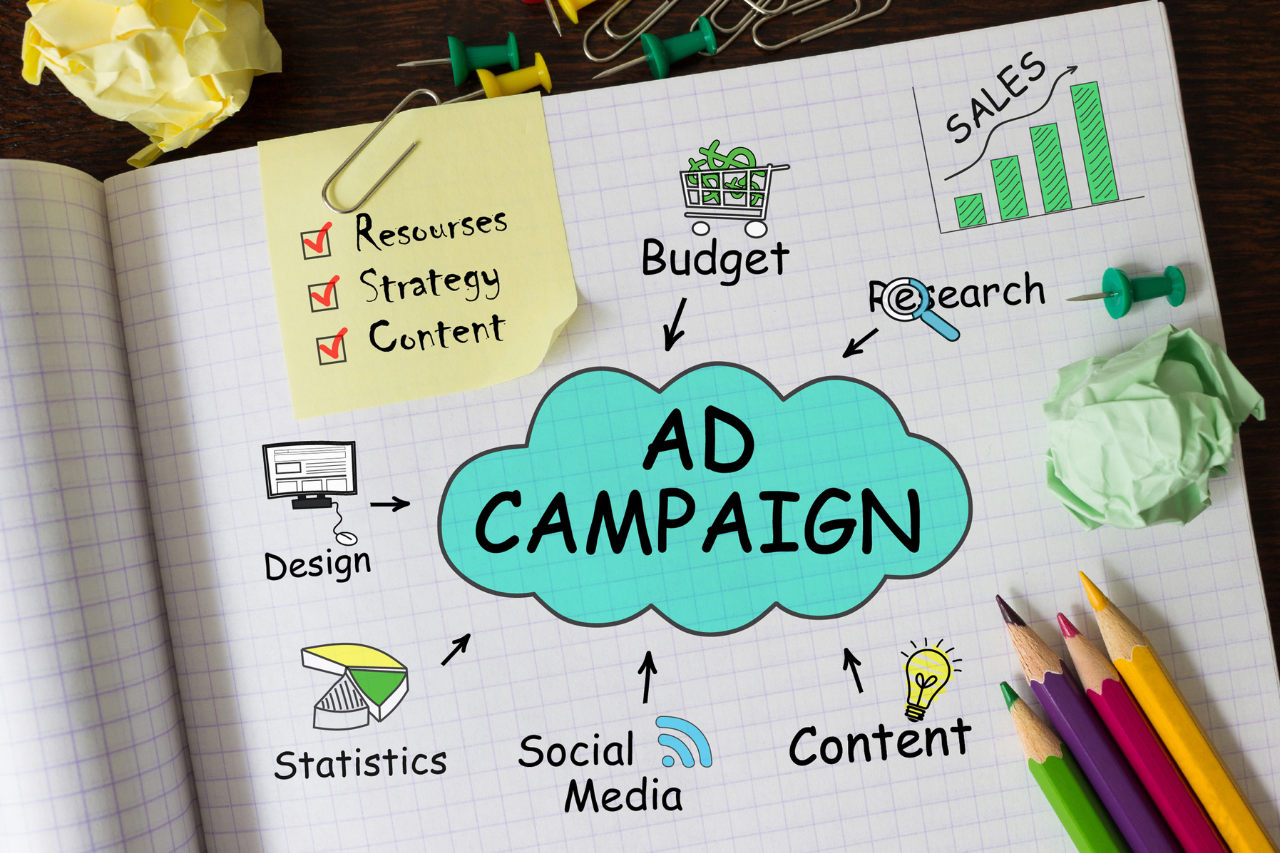
Explore the role of ad extensions in PPC campaigns. Learn their types, benefits, strategic use, potential pitfalls, and future trends.
In the vast digital marketplace, Pay-Per-Click (PPC) campaigns are the engine driving targeted traffic to businesses, large and small. Like a well-oiled machine, they generate clicks, and more importantly, conversions. But the PPC landscape is ever-evolving, presenting us with advanced tools to further optimize our campaigns.
One such tool is ad extensions. Rather than an added bonus, think of them as an essential part of the PPC toolkit. These are additional pieces of information that expand your advertisement to make it more useful to users. They come in many flavors, including extra text, contact details, or more deep links to your website.
So why are we dwelling on ad extensions today? Well, their role in boosting the effectiveness of PPC campaigns is often underestimated. It’s not just about making your ad bigger; it’s about providing users with multiple avenues to engage with your brand. And this exclusive deep dive is designed to shed light on that very aspect.
Basics Of Ad Extensions
Ad extensions, at their core, are powerful embellishments to your digital ads that pack a lot more information than a basic headline and description. Ad extensions amplify the utility of your ad, providing a wider range of entry points to potential customers. They transform a plain billboard into a multi-door marketplace, each door leading to a unique facet of your brand or business. But to master ad extensions, it’s vital to understand their diverse types and applications. Let’s get started.
Sitelink extensions
Sitelink extensions often go unnoticed but are crucial for effective advertising. They allow you to include additional links in your ad that lead to various pages of your website. Imagine having your homepage, products page, contact page, and an ongoing promotion all available to click on within a single ad. It’s like giving a guided tour of your website right from the search results page.
Callout extensions
Callout extensions, on the other hand, are concise and effective. They let you add text to highlight specific attributes or offers. Want to highlight ‘free shipping’, ’24/7 customer support’, or ‘award-winning service’? This is where callout extensions shine. They’re your ad’s bullet-point bragging rights.
Call extensions
Then we have call extensions, the equivalent of having a “dial now” button right within your ad. They add a phone number or call button to your ad, making it super easy for leads to connect with you directly. For businesses where a phone call can make all the difference, call extensions are invaluable.
Location extensions
Location extensions are perfect for brick-and-mortar businesses. They allow you to append your business address, phone number, and a map marker to your ad. It’s a simple, straightforward invitation for customers to visit your establishment.
Structured snippet extensions
Structured snippet extensions, a bit more nuanced, allow you to highlight specific aspects of your products or services. For instance, you can use these to showcase your hotel’s amenities, your store’s product categories, or your brand’s service catalog. Think of them as a sneak peek into your offerings.
Price extensions
Price extensions are a transparent and attractive way to display your products or services with their corresponding prices. In just a few clicks, users can see what you offer and at what cost, making it easier for them to make an informed decision.
App extensions
Lastly, we have app extensions, a must-have for businesses with a mobile app. These extensions directly link to your app’s download page on Google Play or the Apple App Store, bringing your mobile platform to the forefront.
Platforms Where Ad Extensions Are Used
When it comes to deploying ad extensions, you have several platforms at your disposal. However, their birthplace and most comprehensive playground remain Google Ads. Introduced to enhance the value of text ads, ad extensions have become an integral part of Google’s advertising ecosystem.
On Google Ads, ad extensions can be utilized in two significant types of campaigns: Search and Display. Search campaigns are those that appear in Google search results, catching users when they’re actively looking for information or solutions. Adding ad extensions to these search ads enhances their utility, giving users more and richer options to interact with.
Display campaigns, on the other hand, appear on Google’s vast network of partner websites. These ads pop up while users are browsing, watching YouTube videos, checking their Gmail, or using mobile apps and devices. Ad extensions for Display campaigns can increase engagement by offering users additional interactive elements or more relevant information.
But Google isn’t the only game in town. Microsoft Advertising, formerly known as Bing Ads, has also recognized the effectiveness of ad extensions and has implemented them in its platform. On Microsoft Advertising, ad extensions can be used in Search campaigns. Given that Microsoft’s search engine, Bing, powers a significant chunk of internet searches, this platform offers a substantial opportunity for advertisers to reach new audiences.
In both Google and Microsoft platforms, ad extensions can significantly elevate the performance of your ads. They offer additional information, provide shortcuts to different pages on your website, and generally increase the attractiveness of your ads.
Importance Of Ad Extensions In PPC Campaigns
Ad extensions have a transformative impact on the performance of PPC campaigns. Their influence is wide-ranging, offering benefits from heightened visibility to improved conversion rates.
The most noticeable contribution of ad extensions is their ability to augment ad visibility. With extra information and increased interactivity, ads become more prominent on the digital landscape. They stand out from the sea of ordinary ads, drawing the attention of potential customers. According to Google, some ad extensions can boost the click-through rate by up to 15%.
Moreover, the enhanced visibility of your ads isn’t just about drawing attention—it’s about drawing the right attention. By providing users with more relevant information upfront, ad extensions can help improve the quality of your clicks, leading to an overall increase in click-through rates (CTR). It’s not just about getting more clicks; it’s about getting more valuable clicks.
Additionally, ad extensions play a significant role in improving conversion rates. By offering users multiple avenues to interact with your business—be it through a direct call, a visit to your physical location, or a link to a specific product—you’re simplifying their journey from discovery to purchase. This ease of access can drive up conversions significantly.
Finally, ad extensions can influence your ad rank and Quality Score in Google Ads. The ad rank determines the position of your ad on the page, and the Quality Score is Google’s rating of the quality and relevance of both your keywords and PPC ads. Effective use of ad extensions can improve both of these metrics, leading to better ad positioning and potentially lower costs per click.
How To Effectively Implement Ad Extensions In PPC Campaigns
Implementing ad extensions effectively in your PPC campaigns requires strategic planning, attention to detail, and performance tracking. Each step is crucial to ensure you’re leveraging the full potential of ad extensions.
Choosing the right ad extensions for your campaign
Firstly, choosing the right ad extensions for your campaign is pivotal. Every business is unique, and so is its advertising strategy. If you run a local store, location and call extensions might be crucial. For e-commerce platforms, sitelink and price extensions might be more appropriate. Understand your business needs and audience behavior, then choose the ad extensions that serve them best.
Best practices for writing compelling ad extensions
Writing compelling ad extensions is an art. It’s all about balancing useful information with a persuasive pitch. For sitelink extensions, use short, clear titles and descriptive lines that effectively summarize the linked page’s content. For callout extensions, highlight unique selling points or offers that set your business apart. Remember, your ad extensions should be valuable additions to the primary ad, not mere repetition.
Using ad extensions to complement overall PPC strategy
Incorporating ad extensions should not be an afterthought but an integral part of your overall PPC strategy. They should work in harmony with your ad copy, keywords, and landing pages to create a cohesive user experience. The role of ad extensions is to enhance your ads, not overshadow them.
Tracking the performance of ad extensions
Lastly, don’t just set and forget your ad extensions. Monitor their performance regularly. Most ad platforms provide detailed metrics that can help you understand how your ad extensions are performing. Track metrics like clicks, click-through rate, and conversion rate to measure their effectiveness. Make data-driven decisions to refine and improve your strategy over time.
Possible Pitfalls And Limitations Of Using Ad Extensions
Despite the numerous benefits ad extensions bring to PPC campaigns, there are potential pitfalls and limitations to be aware of. Being informed about these issues can help you create a more effective and efficient ad strategy.
Overloading
Overloading an ad with extensions is one such pitfall. While it might seem like the more information you provide, the better, overburdening an ad with too many extensions can overwhelm the audience and dilute the ad’s main message. The ad may become cluttered, making it hard for viewers to quickly grasp your offering. The key is to strike a balance and only use extensions that add significant value to the ad.
Incorrect implementation
Incorrect implementation of ad extensions can also negatively impact your campaign. This could be choosing inappropriate extensions for your goals, using generic descriptions that don’t provide extra value, or providing outdated or incorrect information. Such mistakes not only waste your ad space but could also mislead potential customers and harm your brand’s reputation.
Incompatibility with certain devices or platforms
Incompatibility with certain devices or platforms is another limitation. Some extensions might not display on all devices. For example, message extensions appear only on devices capable of sending text messages. Similarly, not all ad platforms support all types of extensions. For instance, while Google Ads has a wide range of extensions, Microsoft Advertising supports a narrower selection.
While these potential issues underline the need for careful planning and implementation, they shouldn’t deter you from utilizing ad extensions. Instead, they should guide you to use them strategically, ensuring that you provide the right information in the right way, enhancing your PPC campaigns’ overall performance and effectiveness.
Final Thoughts
It can be firmly stated that ad extensions are a pivotal factor in driving the success of PPC campaigns. They have the ability to transform basic ads into interactive experiences, significantly improving ad visibility, click-through rates, and conversion rates. They have the ability to transform basic ads into interactive experiences, significantly improving ad visibility, click-through rates, and conversion rates.
Looking ahead, the role of ad extensions in PPC campaigns will continue to evolve. As user behavior and technology change, we may witness the emergence of new ad extensions types or even novel ways of leveraging existing ones. Embrace these changes, stay adaptable, and keep exploring the untapped potential of ad extensions in PPC campaigns. Because in this ever-evolving digital landscape, those who adapt, win.



